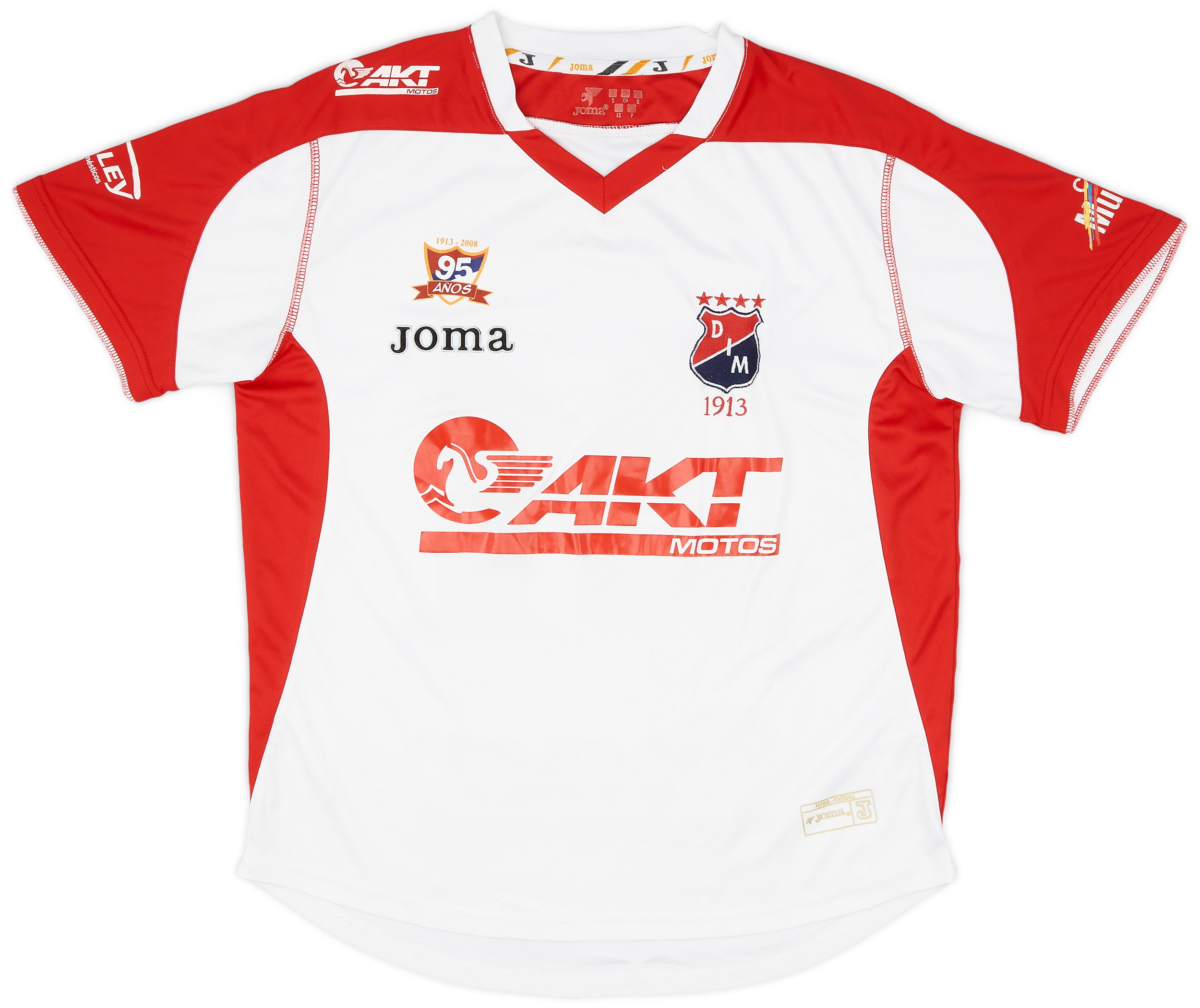Independiente Medellin
Introduction Independiente Medellín, affectionately known as “El Poderoso de la Montaña” (The Mighty One of the Mountain), is a football club based in Medellín, Colombia. Established in 1913, the club stands as one of the oldest and most revered institutions in Colombian football. With a passionate fanbase and a rich history, Independiente Medellín has become […]
2008 Independiente Medellin Home Shirt #21 - 9/10 - (S)
94.99£ - ca: €112
2013 Independiente Medellin GK Shirt - 8/10 - (S)
70.99£ - ca: €84
Introduction
Independiente Medellín, affectionately known as “El Poderoso de la Montaña” (The Mighty One of the Mountain), is a football club based in Medellín, Colombia. Established in 1913, the club stands as one of the oldest and most revered institutions in Colombian football. With a passionate fanbase and a rich history, Independiente Medellín has become synonymous with resilience and identity, navigating the ups and downs of the beautiful game with unwavering spirit. The vibrant red and blue jerseys of the team not only represent the colors of the city but also embody the pride of countless supporters.
Club History
Independiente Medellín was founded on March 14, 1913, making it one of Colombia’s oldest football clubs. The club was established by a group of students and professionals aiming to promote football in the city of Medellín. The early years of the club were marked by regional competitions, but it quickly progressed to gain national prominence. In 1948, Independiente Medellín achieved significant recognition by winning its first professional title in the Colombian league, solidifying its status as a competitive team in the nation. Key historical moments for the club include its induction into the Colombian Football Federation in the late 1940s and its role as one of the founding members of the Colombian Primera A. Over the decades, the club has seen various transformations, yet it has maintained a deep-rooted connection with its community.
Achievements
Independiente Medellín boasts a remarkable list of achievements in Colombian football. The club has claimed the Colombian league title a total of 14 times, with championships won in 1955, 1956, 1976, 1981, 1982, 1983, 1984, 1985, 1990, 1994, 2002, 2004, 2016, and most recently in 2022. In addition to its domestic prowess, Independiente Medellín has had notable success in continental competitions, including the Copa Libertadores and the Copa Sudamericana, where they reached the finals in 1961, 1964, and 2016. Despite falling short in these finals, their achievements in international tournaments speak volumes about their competitive spirit. The club’s determination and skill have established it as a protagonist both in Colombian football and on the continental stage.
Significant Players and Matches
Over the years, Independiente Medellín has been home to several legendary players who have left an indelible mark on the club’s storied history. Notable figures include attacking legends such as Loco Abreu, who contributed significantly to the team’s offense in the early 2000s, and Andrés Ricaurte, a midfield maestro known for his vision and passing skills. Additionally, players like Hernán “El Loco” Arretche and Andrés “El Rifle” Andrade have enjoyed successful stints with the club, showcasing their talents on both local and international platforms. Landmark matches against arch-rivals Atlético Nacional, known as the “Clásico Paisa,” have often defined seasons for El Poderoso. These fiercely contested derbies exemplify the rivalry between the two teams, drawing large crowds and creating unforgettable moments worthy of any footballing drama.
Cultural Impact
Independiente Medellín isn’t just a football club; it represents a cultural phenomenon deeply entrenched in the identity of Medellín and its residents. The club’s fanbase, known as “Los Del Sur,” is renowned for their passionate support and colorful displays during matches. The club’s home ground, Estadio Atanasio Girardot, becomes a cauldron of noise and emotion every time the team takes to the field. The camaraderie and unity among fans promote a sense of belonging, making matches not only sporting events but cultural gatherings. Furthermore, the club has engaged with the local community through various social initiatives, embodying the role of a responsible institution that contributes to the development of its neighborhood, showcasing the significant influence that football holds in Colombian society.
Conclusion
Independiente Medellín’s journey through Colombian football is a testament to its resilience, identity, and rich history. Established over a century ago, the club has not only carved a niche for itself through impressive domestic and international achievements but has also become a symbol of pride for its supporters. The waves of emotion experienced during matches, the legendary players, and memorable victories encapsulate the essence of what it means to be part of this esteemed football institution. As Independiente Medellín continues to evolve and compete, its significance in football history is assured, solidifying its position as a leading force in Colombian football while remaining a beloved institution among its fans.

